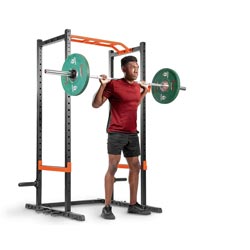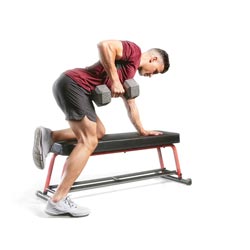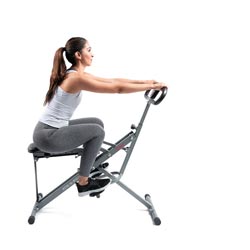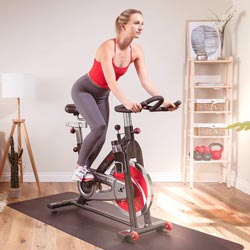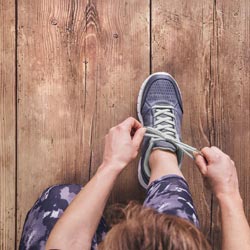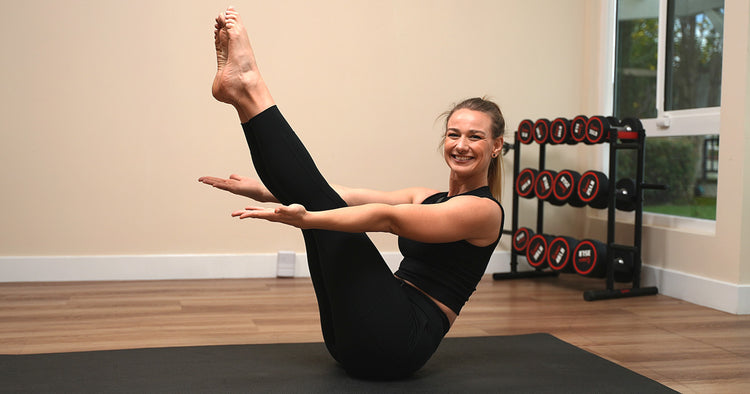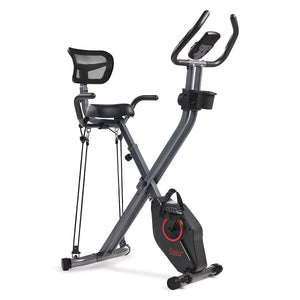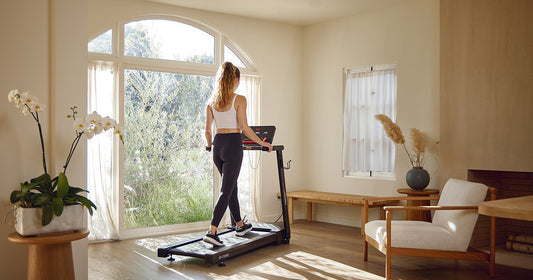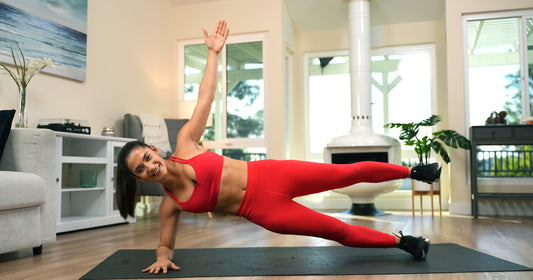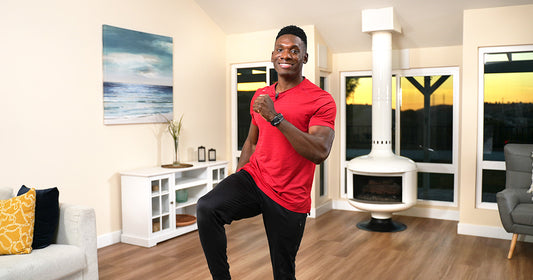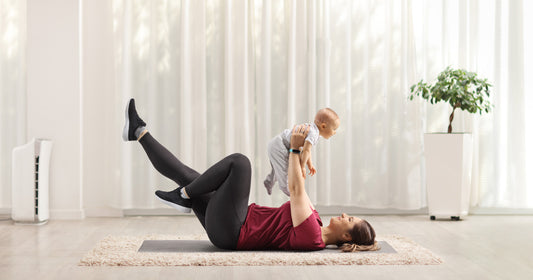Joint health is crucial for maintaining mobility and flexibility, especially as we age. Whether you're an athlete, a fitness enthusiast, or simply someone who wants to maintain an active lifestyle, preserving joint health is essential. While intense physical activity can be fun and get you sweating, it can sometimes take a toll on your body. This can lead to prolonged discomfort and long-term issues. Low-impact exercises can be a great way to prevent potential injuries; you can think of this as a method of “pre-hab” for your joints. So, let's explore the significance of joint health, and various low-impact exercises that will help safeguard your joints effectively.
What Are Joints?
Joints are the connective tissues where two or more bones meet. Joints allow movement and provide support to the skeleton.(1) A joint is composed of cartilage, tendons, ligaments, and nerves. Each of these tissues serves a different purpose depending on the type of joint. Additionally, synovial fluid lubricates the joints, reducing friction, facilitating smooth movement, and acting like a cushion against impact. There are six types of freely movable joints including ball and socket, saddle, hinge, condyloid, pivot, and gliding.(2)
Understanding Joint Health
As we naturally age, the cartilage in our joints may begin to wear down, leading to conditions such arthritis or tendinitis.(3) Factors such as genetics, previous injuries, and excessive weight can further exacerbate joint problems.(4) Sports injuries and car accidents can also cause joint issues that may linger and become more painful with aging. Maintaining joint health becomes paramount to prevent discomfort and maintain a full range of motion.
The best way to care for your joints is to keep your muscles, ligaments, joints, and bones strong and stable through movement.(5) Less movement means increased stiffness in your joints. In fact, aerobic exercise, activities that get your heart rate up, can reduce joint swelling. So, if you find yourself sitting on the couch or computer for long stretches of time, you may be at higher risk for joint pain. So, change positions frequently, take breaks from work, stretch, or go for a short walk.(6)
The Role of Low-Impact Exercise
Low-impact exercise offers a gentle yet effective way to keep joints healthy and functional. Unlike high-impact activities such as running or jumping, which place significant stress on the body, low-impact exercises are gentler while still providing numerous health benefits. By incorporating low-impact exercises into your routine, you can strengthen muscles, improve flexibility, and enhance overall stability without risking injury or exacerbating existing joint issues.(7)
5 Benefits of Low-Impact Exercise:
1. Reduced Stress on Joints
Low-impact exercises minimize the force exerted on your joints, making them ideal for individuals with arthritis or joint pain. Activities such as swimming, cycling, or walking are gentle on your knees, hips, and other weight-bearing joints, allowing for pain-free movement and improved joint function.(8) Remember to move gently and go slowly. Start with a warm up that prioritizes movement at the joints you will be using in your workout. This may include range-of-motion exercises for 5 to 10 minutes before you move on to strengthening or aerobic exercises.(9) Exercise with slow and easy movements. If you feel pain, experience swelling, or redness, take a break. We suggest talking to your health care provider if these issues emerge.
2. Increased Muscle Strength
Strengthening the muscles around your joints can help provide better support and stability, reducing the risk of injury.(10) Low-impact exercises such as yoga, Pilates, and resistance training target various muscle groups without putting undue strain on the joints, leading to improved overall joint health. But don’t worry, this doesn’t mean your fitness routine will be “easy”. You can still expect to raise your heart rate and get a good burn even if you aren’t jumping or running.
3. Enhanced Flexibility and Range of Motion
As children, we innately know how to use our body, get up and down off the ground, and live life pain free. As we age and transition to a more sedentary lifestyle, we forget how to use our body and certain muscles atrophy. Regular low-impact exercise can awaken those muscles that have long been asleep, improve flexibility and range of motion in the joints and make daily activities easier.(11) Increasing range of motion results in a flywheel effect; as you begin to work your joints, the pain will gradually decrease, will allow you to move even more, and help to restore your native range of motion.
4. Weight Management
Maintaining a healthy weight is crucial for joint health, as excess weight can put added stress on the joints, leading to pain and inflammation. Low-impact exercises provide an effective way to burn calories, elevate the heart rate, burn fat, and manage weight without subjecting the joints to excessive strain.(12) If weight loss or weight management has been a problem, low impact exercises are the perfect place to start.
5. Improved Balance and Coordination
Balance is a vital component to all movements. According to an article in the Journal of Clinical Medicine, “Human balance is a complex multidimensional concept related to postural control, and it refers essentially to the ability to maintain a posture (e.g., sitting or standing), move between postures, and not fall when reacting to an external disturbance.”(13). Low-impact exercises that focus on balance and coordination, such as tai chi or gentle aerobics, can help reduce the risk of falls and injuries, particularly in older adults. By enhancing balance and proprioception, these exercises contribute to overall joint stability and function.
Top 5 Low-Impact Exercises for Joint Health
1. Walking
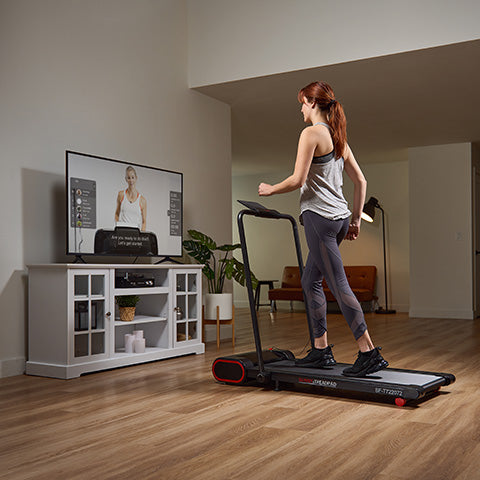
Humans have been walking for thousands of years. It is one of the simplest and basic, yet most beneficial, forms of low-impact exercise. It can be easily incorporated into daily routines and tailored to individual fitness levels. Recent studies have even shown that integrating backwards or “retro” walking into your routine could result in a “greater reduction in pain and functional disability and improved quadriceps muscle strength and performance” than traditional walking.(14) Next time you head to the grocery store, take a parking space further away to get more steps (maybe don’t walk backwards through a busy parking lot though!).
2. Swimming
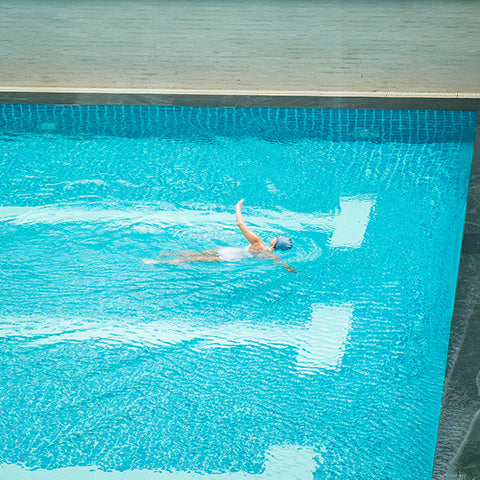
Swimming is a highly effective low-impact exercise that engages your entire body without putting stress on your lower extremities. The resistance of the water provides quality strength training and muscle tone without any high impact forces and “the benefits of swimming exercise were similar to the more frequently prescribed land-based cycling training” to increase cardiovascular fitness as well.(15)
3. Cycling

Whether outdoors or on a stationary bike, cycling is an excellent low-impact exercise that strengthens the muscles surrounding the knees and hips while providing a cardiovascular workout. The rotation of the pedals allows for a gentle movement of the knee and ankle joint which helps to warm up and lubricate stiff joints. Cycling allows you to further refine the intensity level, resulting in a noticeable increase in cardiovascular fitness – similar to swimming.(16)
4. Yoga
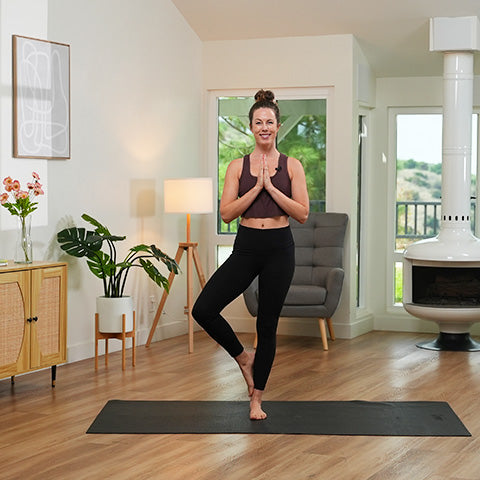
Yoga combines gentle stretching, strengthening, and relaxation techniques to promote overall well-being and joint health. Many yoga poses focus on improving flexibility, balance, and joint mobility, making it suitable for individuals of all ages and fitness levels. Each pose usually has different levels of difficulty which allow you to ease the stretch if it is causing pain. Also, not only does yoga help the body, “regular practice of yoga may have neuroprotective effects against whole brain age-related (gray matter) decline.”(17) Developing a weekly practice has also been shown to help significantly with stress regulation and better body self-esteem.(18)
5. Tai Chi

Tai chi is a gentle form of martial arts that emphasizes slow, flowing movements and deep breathing. It promotes balance, flexibility, and relaxation while reducing stress and improving joint function.(19)
In addition to incorporating low-impact exercises into your routine, there are several lifestyle habits you can adopt to protect your joints:
- Maintain a healthy weight to reduce stress on weight-bearing joints.
- Practice proper posture to minimize strain on the joints and spine.
- Use supportive footwear with cushioning and shock absorption.
- Warm up before exercising and cool down afterward to prevent injuries.
- Listen to your body and avoid overexertion or pushing through pain.
Protecting joint health is essential for maintaining mobility, independence, and overall quality of life. Low-impact exercise offers a safe and effective way to strengthen muscles, improve flexibility, and enhance joint function without placing undue stress on the joints. By incorporating activities such as swimming, cycling, walking, yoga, or tai chi into your routine and adopting healthy lifestyle habits, you can safeguard your joints and enjoy a lifetime of pain-free movement and physical activity. Remember to consult with a healthcare professional before starting any new exercise program, especially if you have pre-existing joint issues or medical conditions. With dedication and consistency, you can take proactive steps to preserve joint health and live life to the fullest.
1-2. Better Health Channel. (n.d.). Joints. Better Health Channel. https://www.betterhealth.vic.gov.au/health/conditionsandtreatments/joints. Accessed 15 April 2024.
3. Atiemo, E. (2022, May 11). Arthritis, Bursitis, or Tendonitis: What's Causing My Pain?. MedStar Health. https://www.medstarhealth.org/blog/arthritis-bursitis-tendonitis-whats-causing-pain. Accessed 15 April 2024.
4. Maffulli, N., Margiotti, K., Longo, U. G., Loppini, M., Fazio, V. M., & Denaro, V. (2013). The genetics of sports injuries and athletic performance. Muscles, ligaments and tendons journal, 3(3), 173–189
5-6. Miller, K. (2022, November 12). Caring for Your Joints. WebMD. https://www.webmd.com/arthritis/caring-your-joints. Accessed 15 April 2024.
7. Cooney, J. K., Law, R. J., Matschke, V., Lemmey, A. B., Moore, J. P., Ahmad, Y., Jones, J. G., Maddison, P., & Thom, J. M. (2011). Benefits of exercise in rheumatoid arthritis. Journal of aging research, 2011, 681640. https://doi.org/10.4061/2011/681640. Accessed 15 April 2024.
8. North Central Surgical Center. (n.d). 5 Low-Impact Activities to Avoid Joint Pain. North Central Surgical Center. https://northcentralsurgical.com/5-low-impact-activities-to-avoid-joint-pain/. Accessed 15 April 2024.
9. Mayo Clinic. (2023, September 21). Exercise helps ease arthritis pain and stiffness. Mayo Clinic. https://www.mayoclinic.org/diseases-conditions/arthritis/in-depth/arthritis/art-20047971. Accessed 15 April 2024.
10. Biddulph, M. (2022, September 13). A low impact workout to build muscle. Live Scientce. https://www.livescience.com/low-impact-workout-to-build-muscle. Accessed 15 April 2024.
11. Chuze Fitness. (2020, August 10). 5 Benefits of Low Impact Exercise. Chuze Fitness. https://chuzefitness.com/blog/5-benefits-of-low-impact-exercise/. Accessed 15 April 2024.
12. Epstein L.H., Goldfield G.S. Physical activity in the treatment of childhood overweight and obesity: Current evidence and research issues. Med. Sci. Sports Exerc. 1999;31:S553–S559. doi: 10.1097/00005768-199911001-00011
13. Papalia, G. F., Papalia, R., Diaz Balzani, L. A., Torre, G., Zampogna, B., Vasta, S., Fossati, C., Alifano, A. M., & Denaro, V. (2020). The Effects of Physical Exercise on Balance and Prevention of Falls in Older People: A Systematic Review and Meta-Analysis. Journal of clinical medicine, 9(8), 2595. https://doi.org/10.3390/jcm9082595. Accessed 15 April 2024.
14. Alghadir, A. H., Anwer, S., Sarkar, B., Paul, A. K., and Anwar, D. (2019). Effect of 6-week retro or forward walking program on pain, functional disability, quadriceps muscle strength, and performance in individuals with knee osteoarthritis: a randomized controlled trial (retro-walking trial). BMC Musculoskelet. Disord. 20:159. doi: 10.1186/s12891-019-2537-9
15-16. Alkatan, M., Baker, J. R., Machin, D. R., Park, W., Akkari, A. S., Pasha, E. P., et al. (2016). Improved function and reduced pain after swimming and cycling training in patients with osteoarthritis. J. Rheumatol. 43, 666–672. doi: 10.3899/jrheum.151110
17. Villemure C, Čeko M, Cotton VA, Bushnell MC. Neuroprotective effects of yoga practice: age-, experience-, and frequency-dependent plasticity. Front Hum Neurosci. 2015 May 12;9:281. doi: 10.3389/fnhum.2015.00281. PMID: 26029093; PMCID: PMC4428135
18. Miller, K. (2023, March 8). Study Finds This Low-Impact Workout Helps Seniors Regain Their Strength. Prevention. https://www.prevention.com/fitness/fitness-tips/a43337990/yoga-seniors-strength-study/. Accessed 15 April 2024.
19. Fanelli, L. (n.d.). Tai Chi Workout: A Low-Impact Exercise for the Body, Mind, and Soul. Toms. https://www.tomsofmaine.com/good-matters/healthy-feeling/tai-chi-workout-low-impact-exercise-body-mind-and-. Accessed 15 April 2024.

